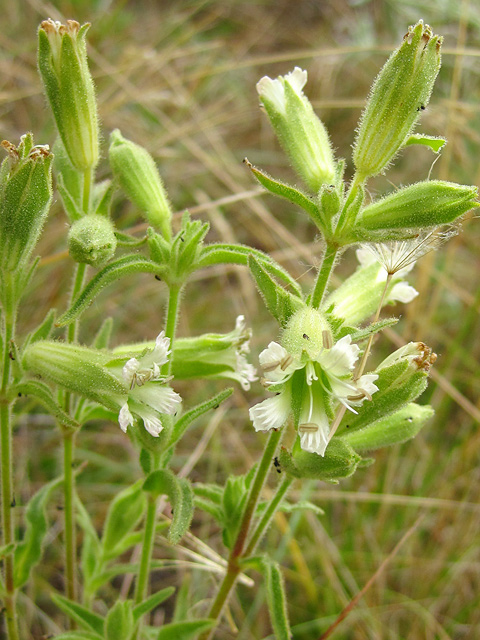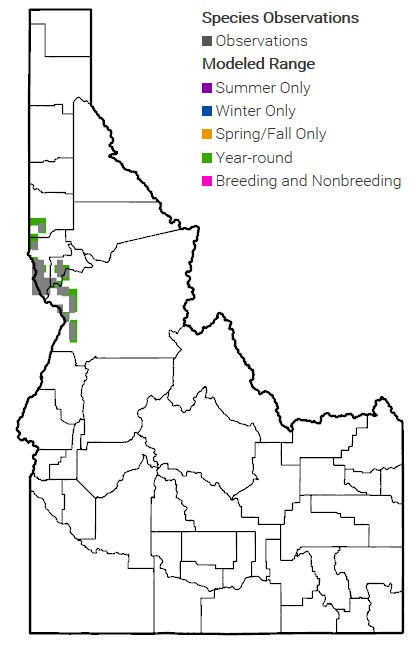ESA Status: Threatened
Spalding’s catchfly (Silene spaldingii) is a greenish-white flowering perennial endemic to the prairie grassland in bunchgrass, sage-brush steppe, and open pine areas. Prairie grassland remnants are scattered throughout eastern Washington, northeastern Oregon, northern Idaho, and western Montana. There are currently only 49 known Spalding’s catchfly element occurrences in Idaho. The plant was listed as Threatened on the Endangered Species Act (ESA) in 2001 and its listing status has not changed. The goal of the 2007 Recovery Plan is to protect and maintain reproducing, self-sustaining populations of Spalding’s catchfly so that it no longer needs ESA protection.
However, the most recent Five-Year Status Review, released in 2021, found that Spalding’s catchfly is still not secure from threats and has not made enough recovery progress to meet delisting requirements. Spalding’s catchfly continues to face threats from habitat loss and fragmentation through development and over usage, invasive nonnative plants, changes to wildfire regime and effects, overgrazing, trampling and predation. The 2021 Five-Year Status Review also found that pollinator conservation, particularly of the golden northern bumble bee (Bombus fervidus) and the white-shouldered bumblebee (Bombus appositus), can help reduce low seed viability causing declines in Spalding’s catchfly populations.
Staff Contact:
More Information:
Species Profile for Spalding’s Catchfly – U.S. Fish & Wildlife Service

Photo Credit: Oregon Department of Agriculture

Map Credit: Idaho Department of Fish and Game
 Official Government Website
Official Government Website